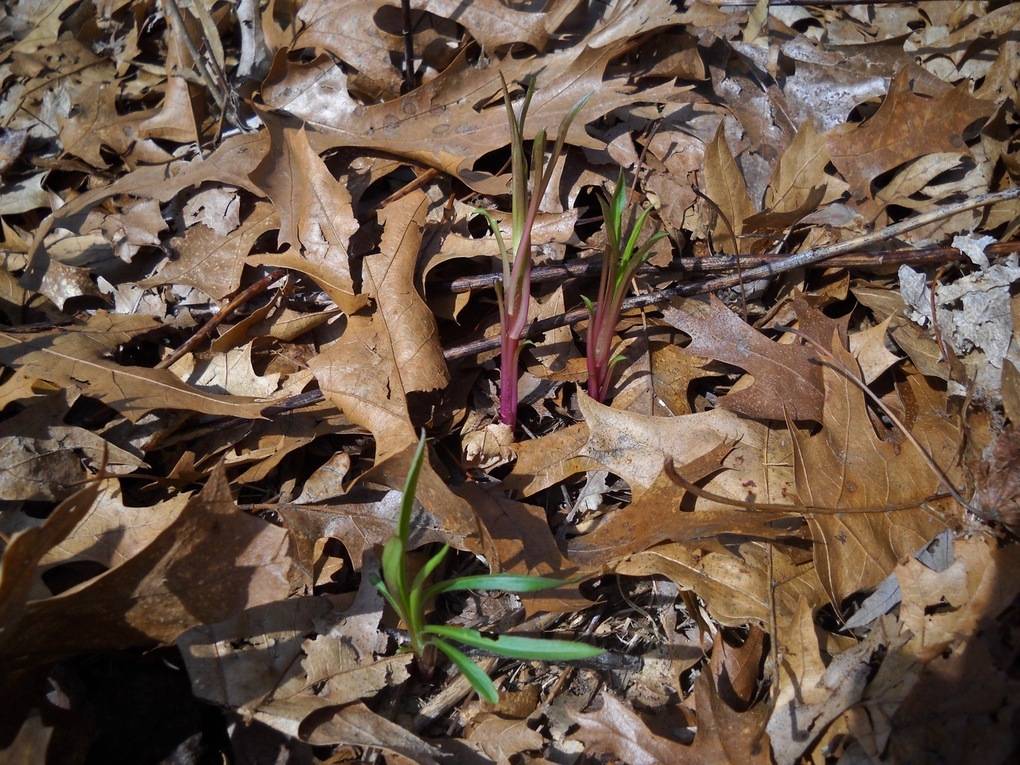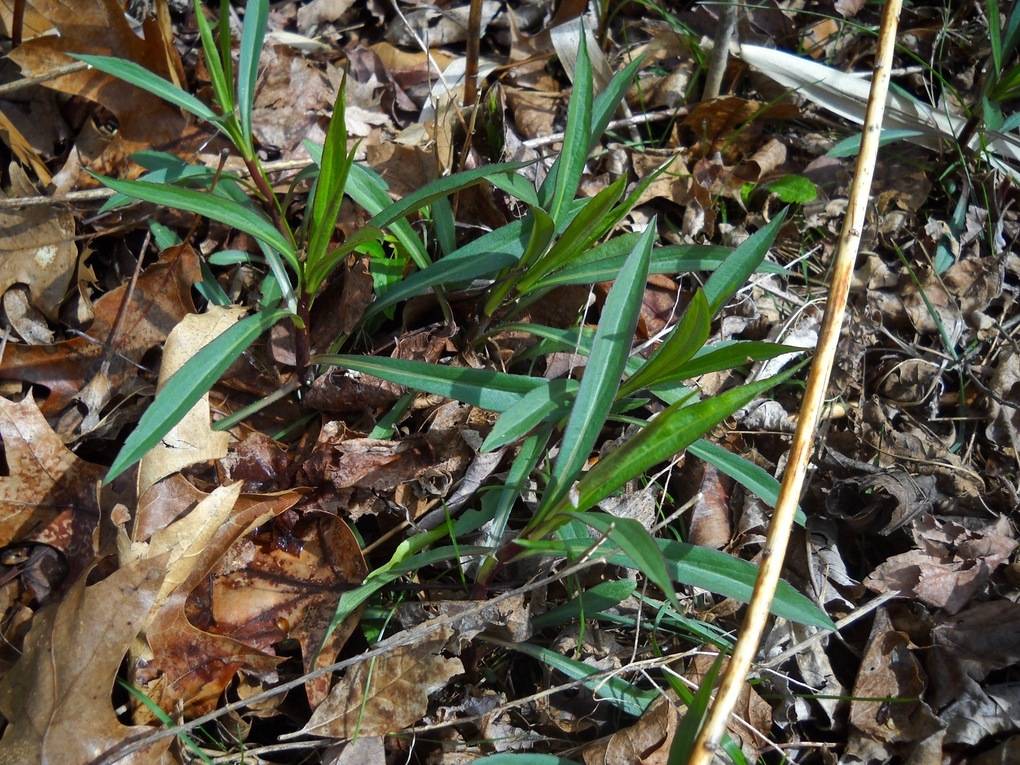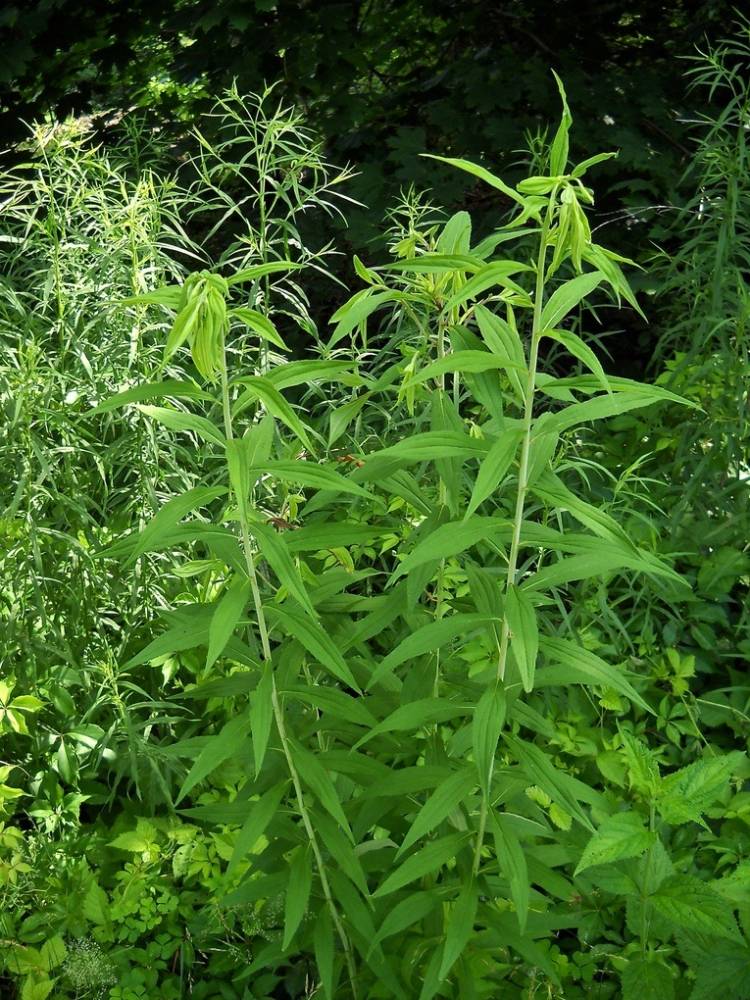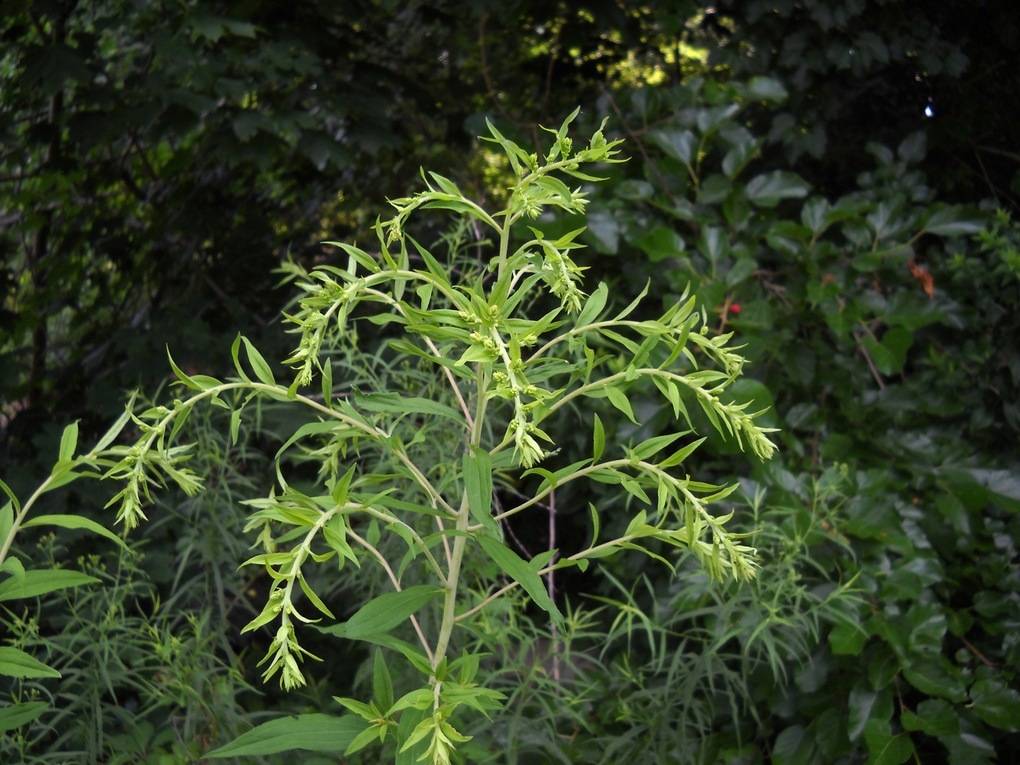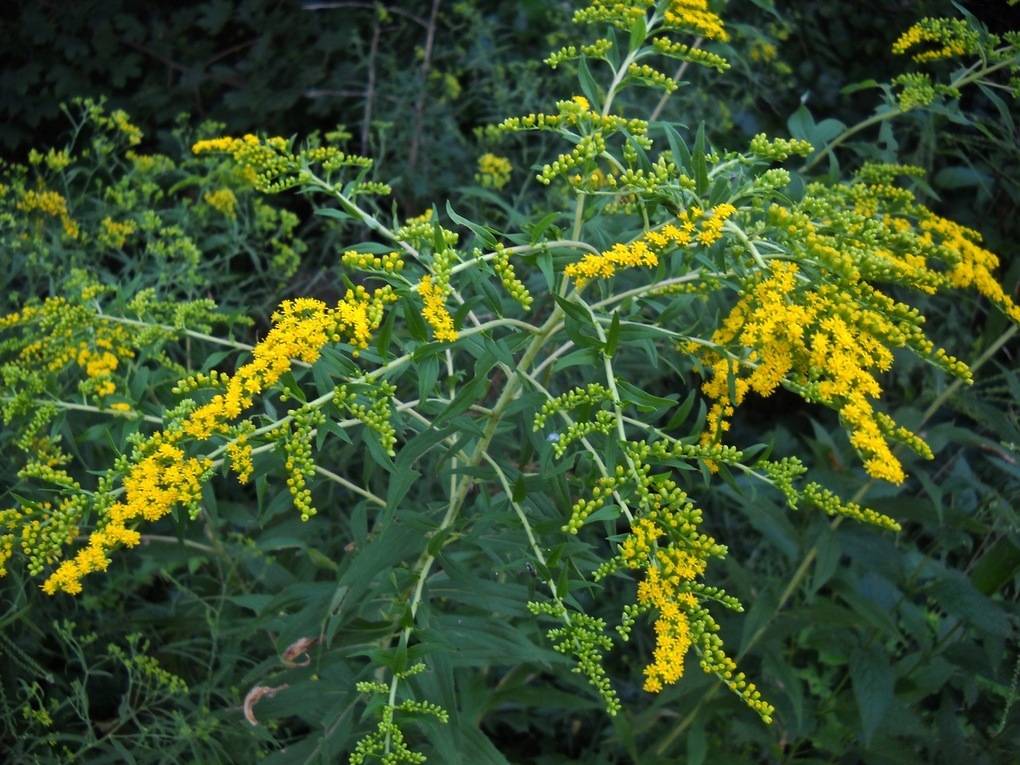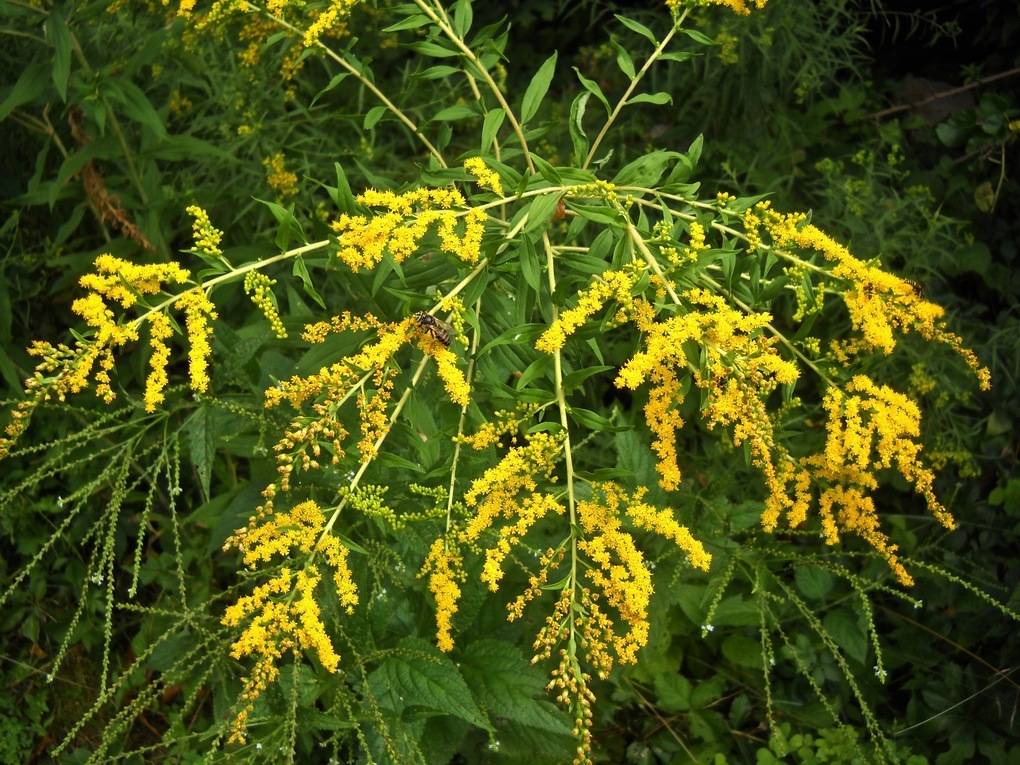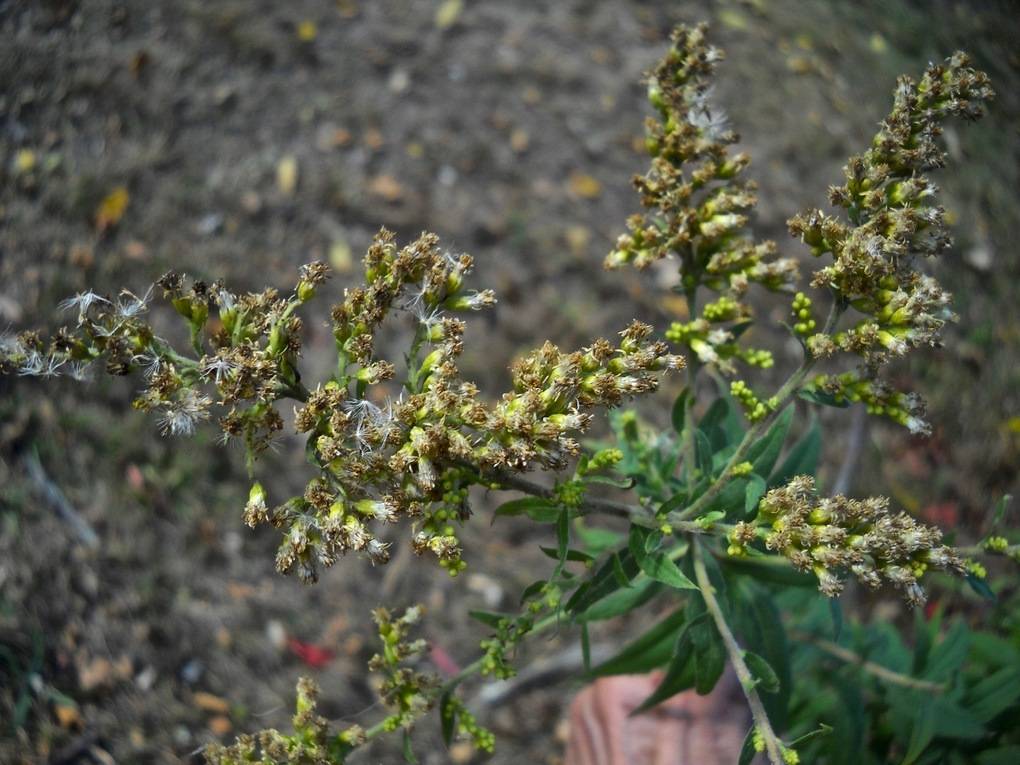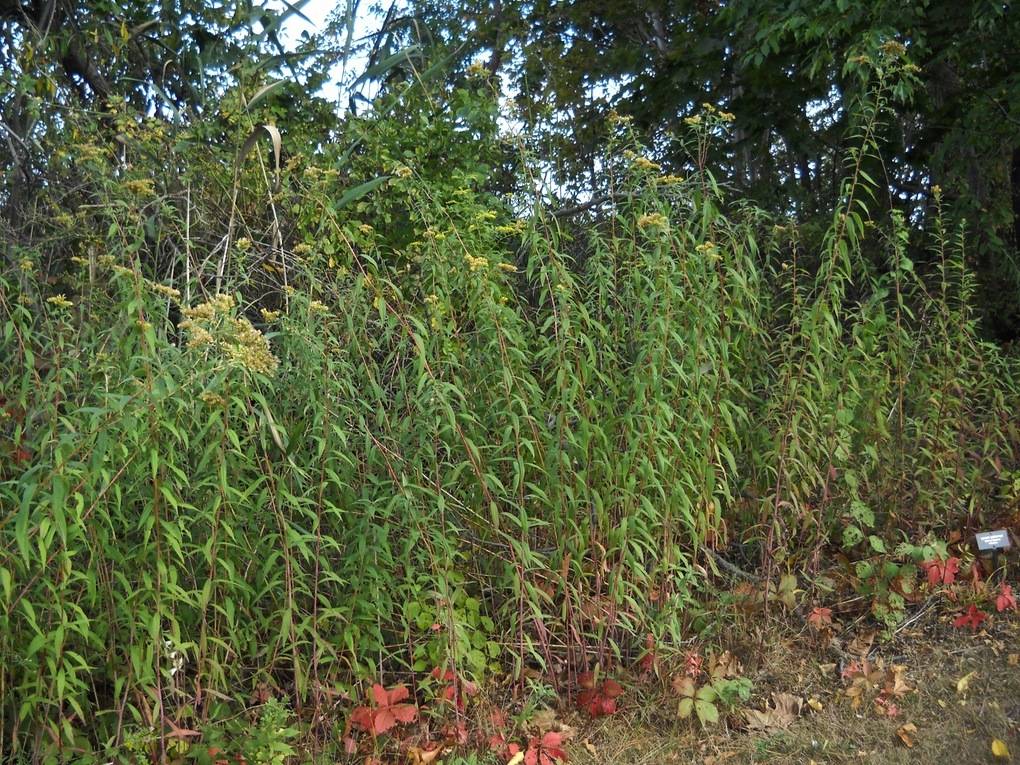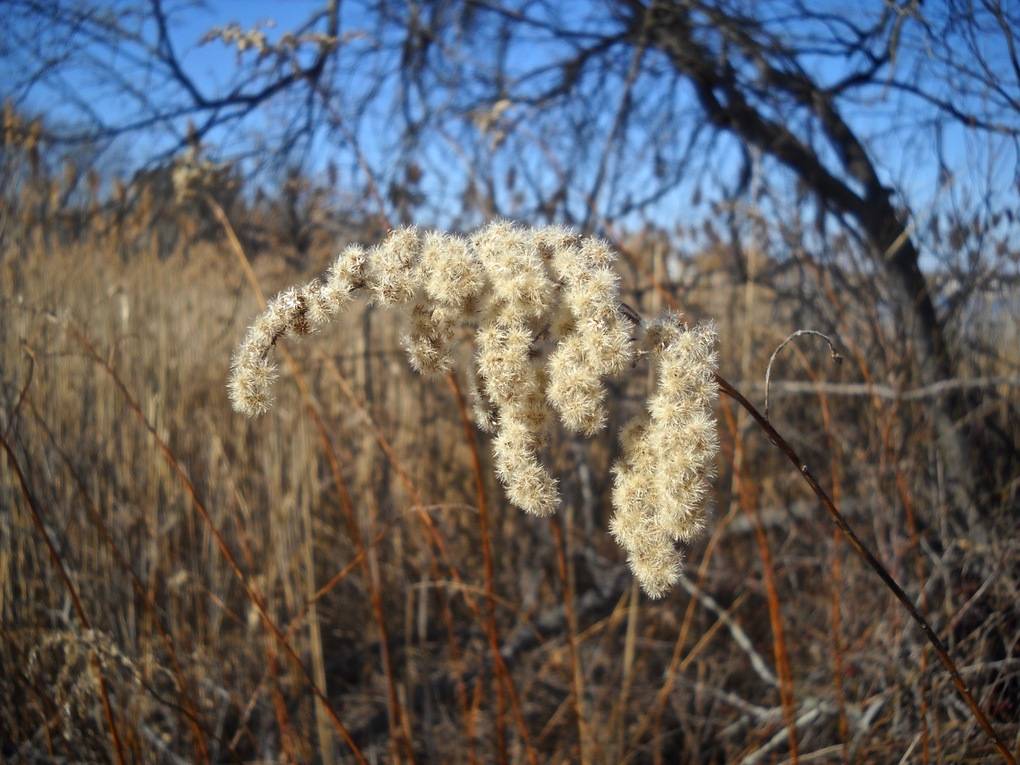smooth goldenrod
The smooth goldenrod is a native perennial forb that often grows in the same habitat as Canada goldenrod, another sun-loving native species. However, the two can easily be distinguished because the smooth goldenrod has a smooth stem whereas the Canada goldenrod has a hairy stem.
At Salter Grove, the two are often found growing as adjacent but discrete patches along the Upland Trail.
The smooth goldenrod was first introduced as an ornamental to Europe but has been declared to be an invasive species in Hungary and Poland where its aggressive growth has caused great economic losses and presented difficult challenges to the conservation of native vegetation.
Many insects are attracted to the pollen and nectar of the profuse flowers. Small birds such as the American Goldfinch, Swamp Sparrow and Dark-eyed Junco feed on the seeds. Both the White Cottontail rabbit and White-tailed deer feed on the leaves and stems.
The leaves and blossoms of smooth goldenrod have been used in treating all kinds of hemorrhages, as well as a purgative or laxative. Native Americans made a tea with the blossoms to treat various fevers.
For more information:
https://gobotany.nativeplanttrust.org/species/solidago/gigantea/
https://www.illinoiswildflowers.info/wetland/plants/gt_goldenrod.htm
https://www.minnesotawildflowers.info/flower/giant-goldenrod
https://en.wikipedia.org/wiki/Solidago_gigantea
http://montana.plant-life.org/cgi-bin/species03.cgi?Asteraceae_Solidagogigantea

